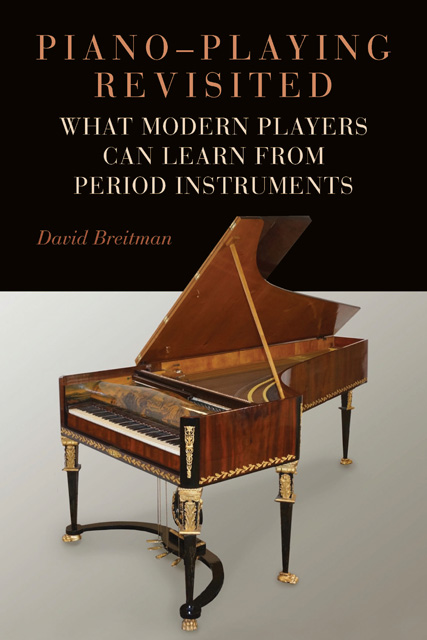Book contents
- Frontmatter
- Dedication
- Contents
- List of Illustrations
- Preface
- Acknowledgments
- 1 Music Making Then and Now
- 2 With Broad Strokes (An Overview)
- 3 The Early Days of the Piano: Haydn and Mozart
- 4 Beethoven and the Evolving Piano
- 5 Schubert
- 6 Chopin
- 7 The Clavichord
- Epilogue: Creativity in the Performance of Old Music
- Appendix: Overtone Structure of the Steinway and Walter, Compared
- Glossary of Terms
- Notes
- Bibliography
- Index of Works
- General Index
Appendix: Overtone Structure of the Steinway and Walter, Compared
Published online by Cambridge University Press: 17 January 2023
- Frontmatter
- Dedication
- Contents
- List of Illustrations
- Preface
- Acknowledgments
- 1 Music Making Then and Now
- 2 With Broad Strokes (An Overview)
- 3 The Early Days of the Piano: Haydn and Mozart
- 4 Beethoven and the Evolving Piano
- 5 Schubert
- 6 Chopin
- 7 The Clavichord
- Epilogue: Creativity in the Performance of Old Music
- Appendix: Overtone Structure of the Steinway and Walter, Compared
- Glossary of Terms
- Notes
- Bibliography
- Index of Works
- General Index
Summary
The following graphs show the distribution of upper partials in the different registers of a Steinway and of a Walter copy, made with the “Pianalyzer” function of the Reyburn Cybertuner software. The left column (P#) indicates the partial: 1 is the fundamental, 2 is the octave above, 3 is the twelfth, etc. The values for “Volume Units” are also represented by the horizontal bars. From the “Sustain seconds” column we can see that for both pianos the higher the partial is, the quicker the decay.
On the Steinway, the fundamental and the first harmonic (= second partial) account for most of the sound. On the fortepiano, both the second and fourth partials (one and two octaves above the fundamental), are stronger than the fundamental, and all the partials up to the tenth make up a significant proportion of the sound. This helps explain why the added resonance provided by the pedal is more noticeable on the modern instrument. The first graphs (Figures A.1 and A.2) show middle C (c1).
The next graphs (Figures A.3 and A.4) show c2 and c3 on the Steinway (C5 and C6 in the Pianalyzer notation). The highest partials have disappeared (they are too high to be audible), but the basic shape remains consistent with c1: the fundamental is by far the strongest component of the sound.
On the Walter, however, each octave is quite distinctive (Figures A.5 and A.6). c2 has almost equal contributions from the second, third, and fourth partials, while c3 is characterized by a very strong second partial.
- Type
- Chapter
- Information
- Piano-Playing RevisitedWhat Modern Players Can Learn from Period Instruments, pp. 175 - 178Publisher: Boydell & BrewerPrint publication year: 2021



